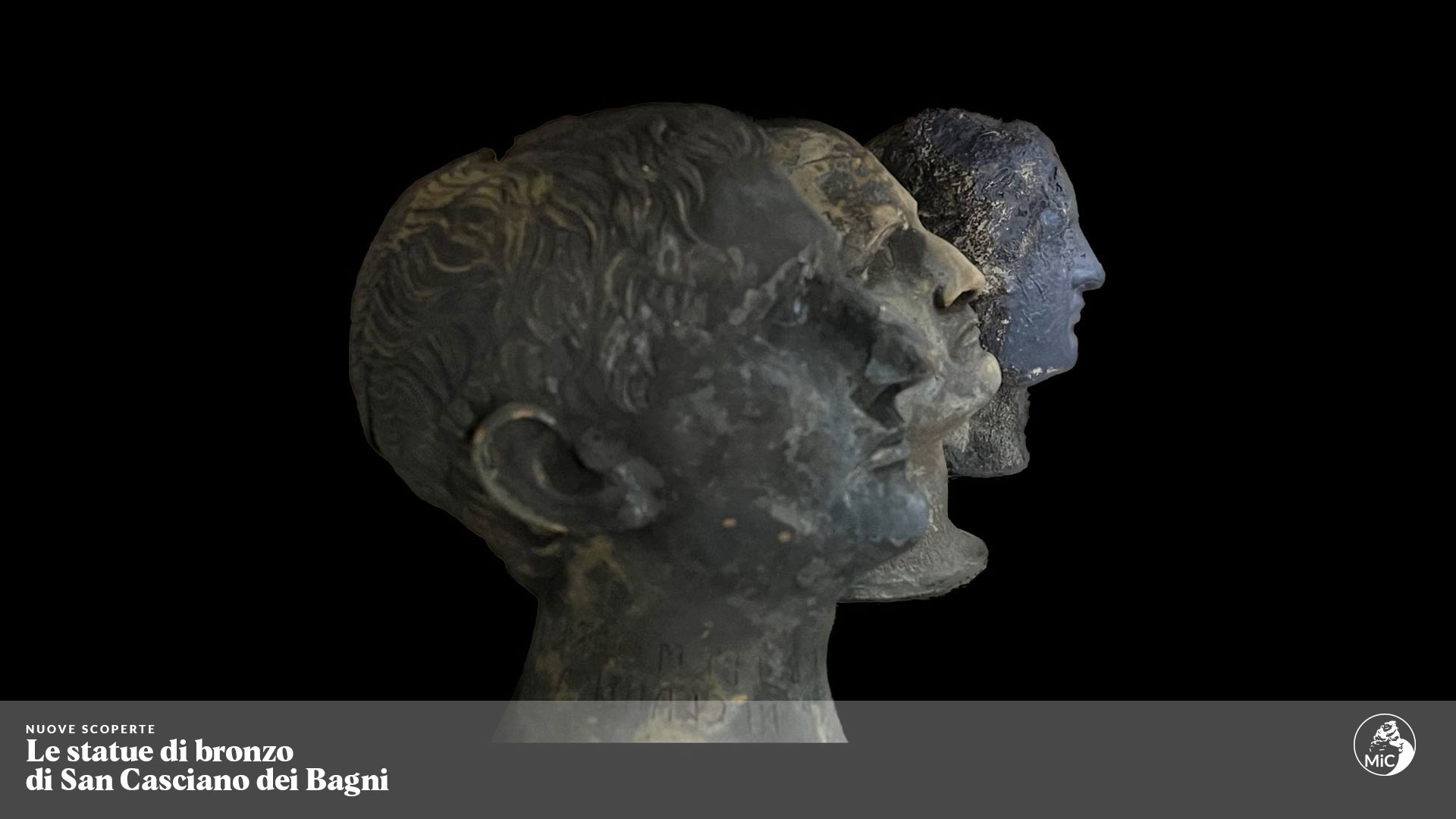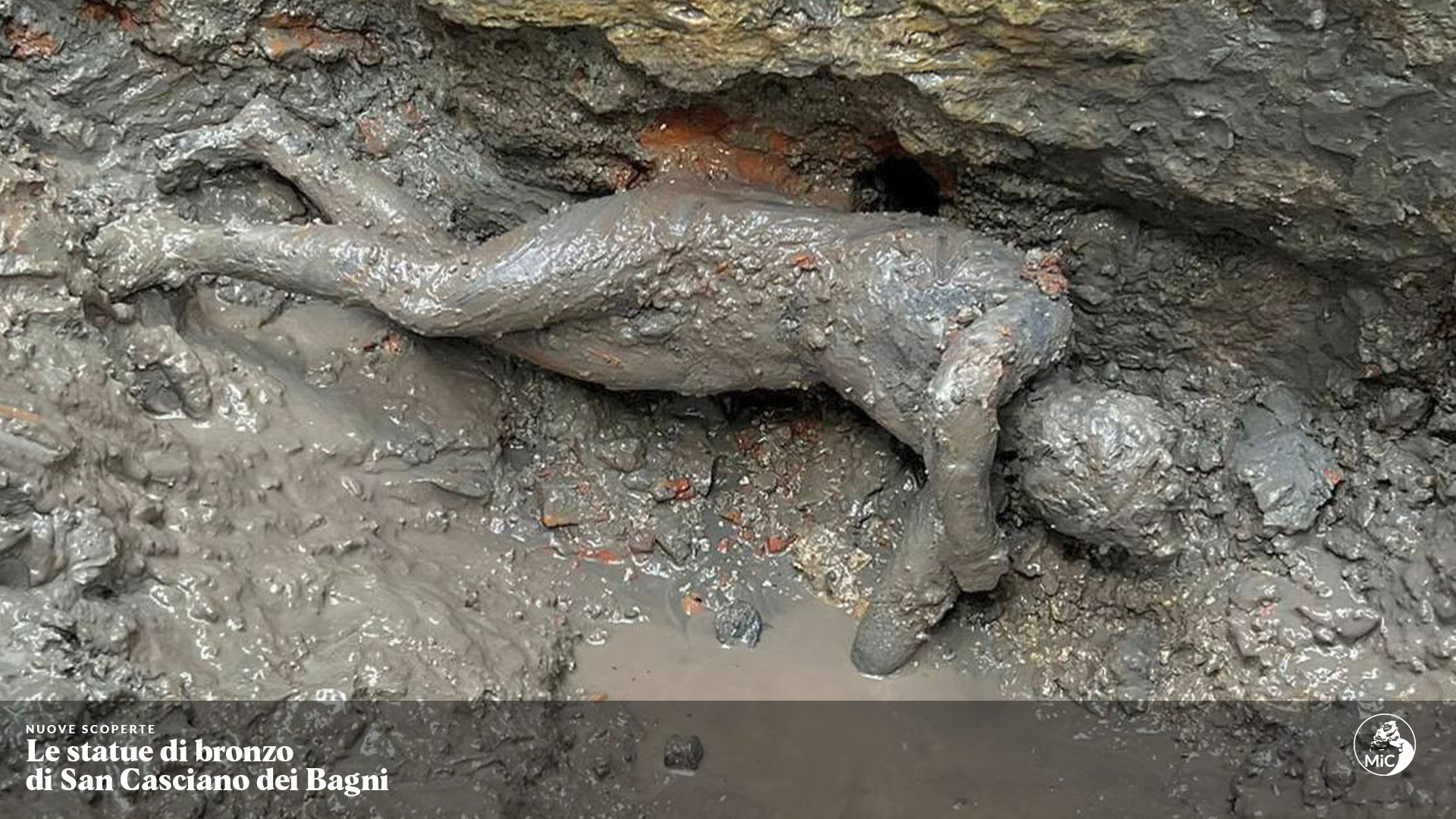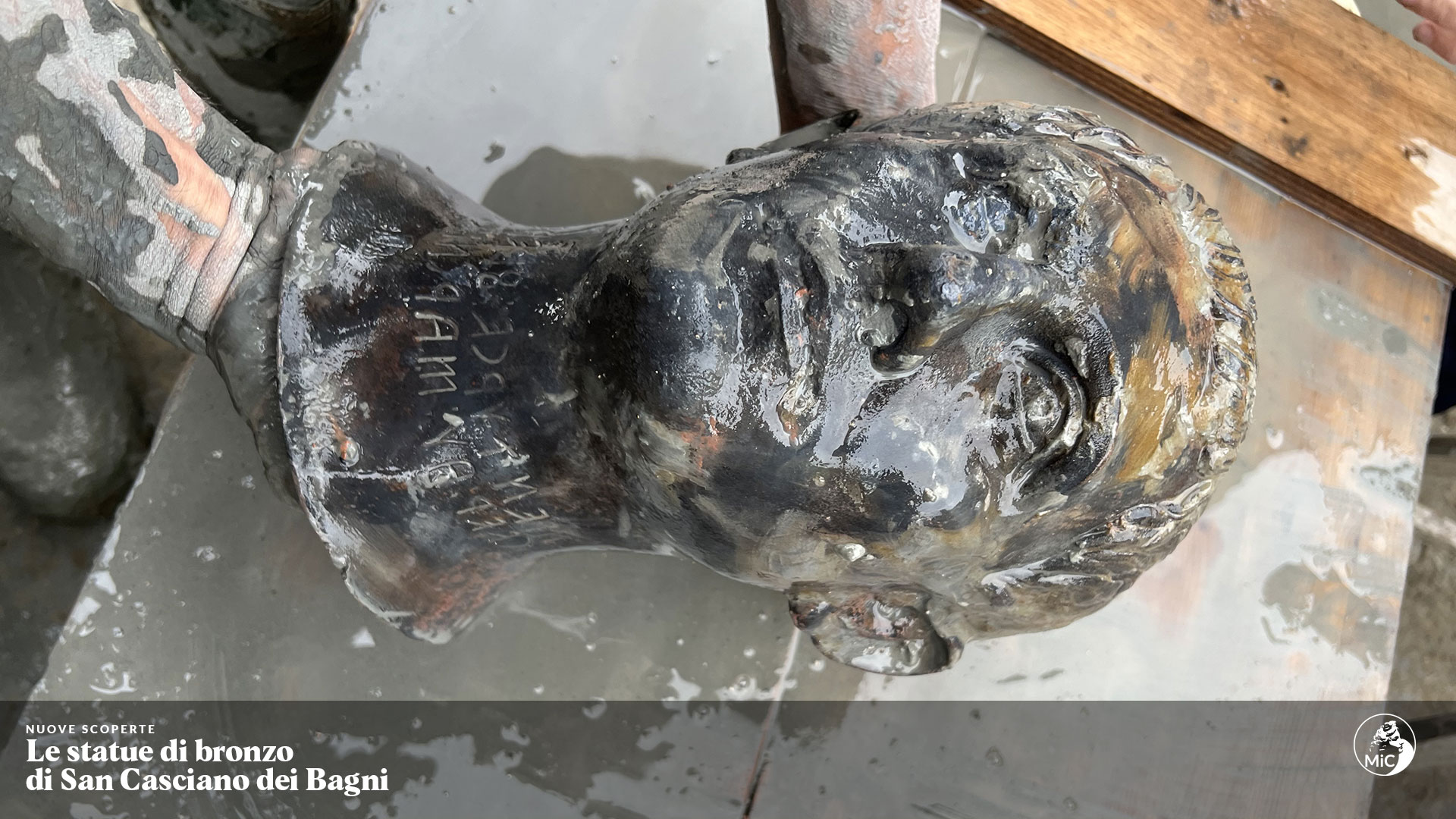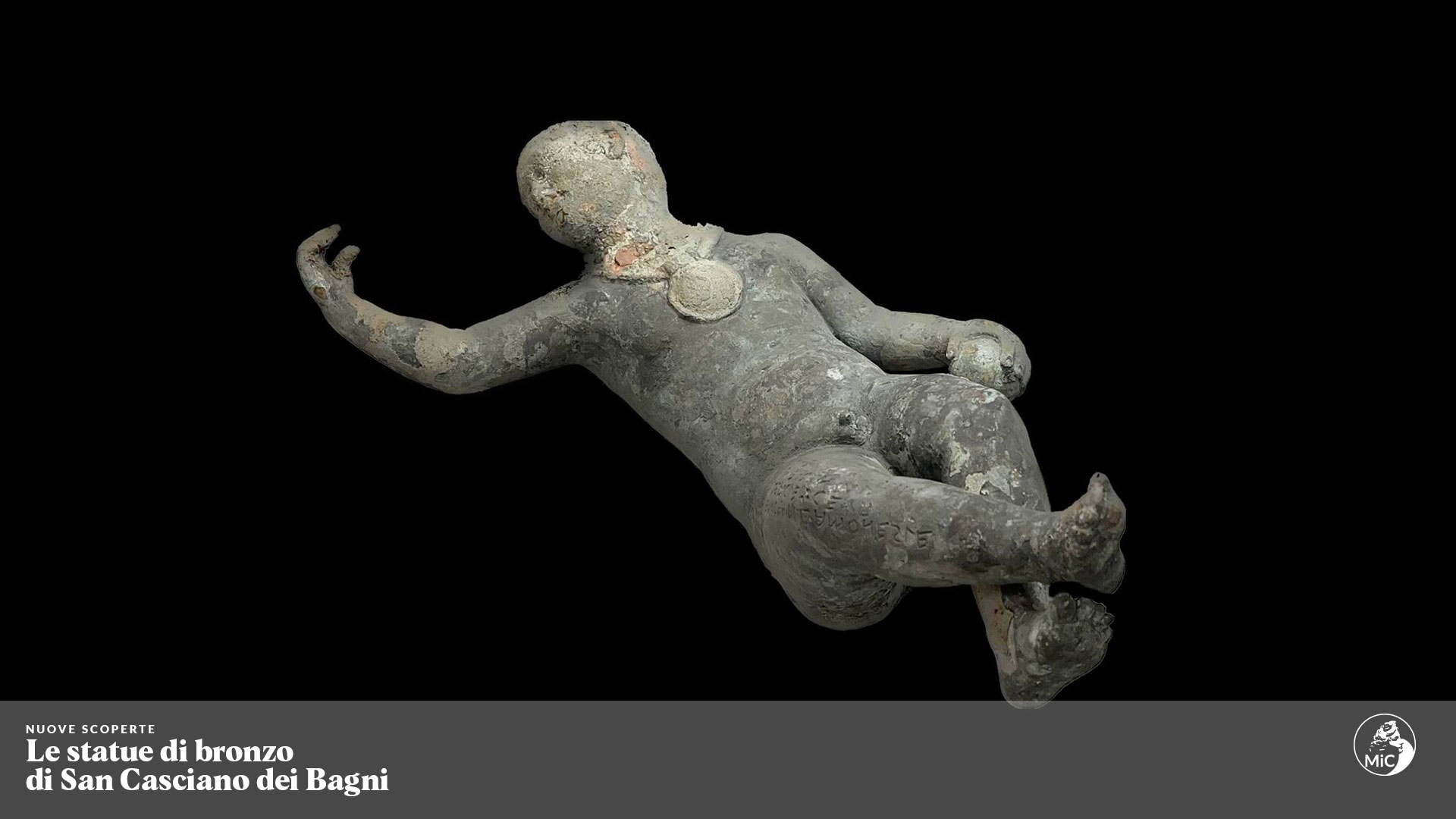At most day spas and retreats, mud baths take about 20 minutes. At the thermal baths of San Casciano dei Bagni, near Siena, Italy, however, they can last for 2,300 years – and it appears to work wonders.
It was last year, after three years of excavations, that the team working on this ancient site finally started uncovering the treasures lying beneath the mud. Initially, it was just small things – a coin, or some minor part of a statue – but soon, they found themselves face to face with what experts hailed as one of the most significant finds in the history of the region.
And when we say “face to face,” we mean it literally.

Three statue heads discovered at the baths.
Emanuele Antonio Minerva – © Ufficio Stampa e Comunicazione MiC
Two dozen statues, perfectly preserved for more than two millennia thanks to the mud they were buried in, have since been revealed – alongside some five or six thousand gold, silver, and bronze coins.
“We thought there could be something here, but nothing like what we found,” excavation director Emanuele Mariotti told the New York Times. “It was like a time capsule waiting to be opened.”

A statue, perfectly preserved by the mud, emerges for the first time in millennia.
Emanuele Antonio Minerva – © Ufficio Stampa e Comunicazione MiC
Hailing from between the 2nd century BCE and the 1st century CE, these relics were created during a time of great upheaval in the region. It was “a historical period of important transformations in ancient Tuscany, in the transition between the Etruscans and the Romans,” explained a translated statement from Italy’s Ministry of Culture; “[an] era of great conflicts between Rome and the Etruscan cities, but also of struggles within the social fabric of the City.”
Yet, the team explained, the statues represent not just conflict, but a growing harmony between the two cultures. The discoveries come with inscriptions in both Etruscan and Latin, and they were buried according to Etruscan tradition – the bathhouse was struck by lightning during the 1st century CE, and a practice known as “fulgur conditum” required that they be buried in a sacred place. That the sacred place was water, though, is a Roman tradition: “You give to the water because you hope that the water gives something back to you,” excavation leader Jacopo Tabolli, a professor at the University for Foreigners of Siena, told Reuters at the time.

A statue head showing inscriptions around the neck
Emanuele Antonio Minerva – © Ufficio Stampa e Comunicazione MiC
The statues, many depicting Graeco-Roman deities including Hygieia, goddess of health and hygiene, and Apollo, god of the Sun and healing (along with about a hundred other things), originally stood in a sanctuary before being ceremoniously plopped into the water. They may have belonged to one of the families mentioned in the inscriptions; the researchers note that being made of bronze, rather than terracotta, is unusually ostentatious for the period, hinting at a home in what Tabolli called an “elite settlement.”
But that’s not all the discoveries show. Even today, the springs of San Casciano dei Bagni are visited for their therapeutic properties – and more than two millennia ago, things were no different. Other statues are more terrestrial in subject matter, showing men, women, and children suffering from the various ailments that brought them to the baths.
“This was a place of healing, meeting of cultures and medical knowledge,” Mariotti said.

A small statue of a child, likely used as a votive offering.
Emanuele Antonio Minerva – © Ufficio Stampa e Comunicazione MiC
So, having at long last re-emerged, what’s in store for the miracle finds? They’re getting a brand-new museum, just for them.
“This discovery offers San Casciano an opportunity that is not only cultural and tourist, but is a real opportunity for rebirth”, remarked Agnese Carletti, mayor of the town. “A new museum will be created in San Casciano, which will host the exceptional statues, and an archaeological park. Two new places which will be a real engine of development for the territory.”
While many of the artifacts have already been exhibited this year at Rome’s Quirinal Palace, the researchers are still busy at the site. “We’ve reconstructed the structure of the sanctuary, but there is still much more to know about the overall site which must have been monumental,” Tabolli said.
“[This] is a unique opportunity to rewrite the history of ancient art and with it the history of the passage between the Etruscans and Romans in Tuscany.”
Source Link: Dozens Of Statues Were Buried In A Mud Bath For 2,300 Years, Preserving Them Perfectly